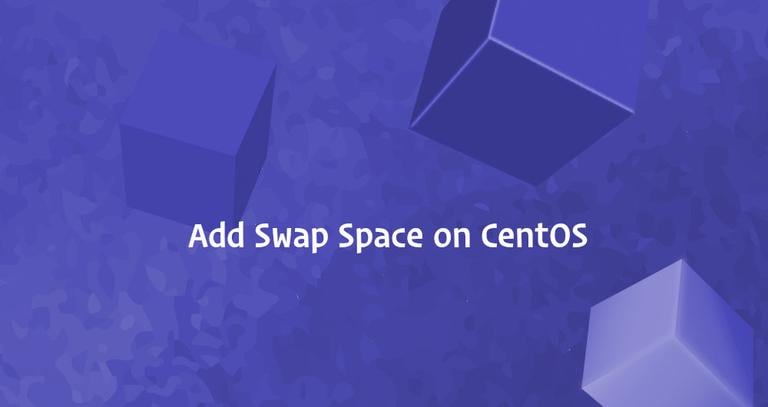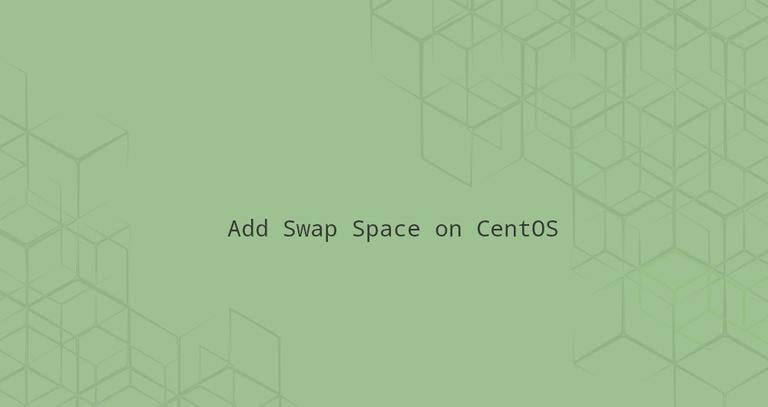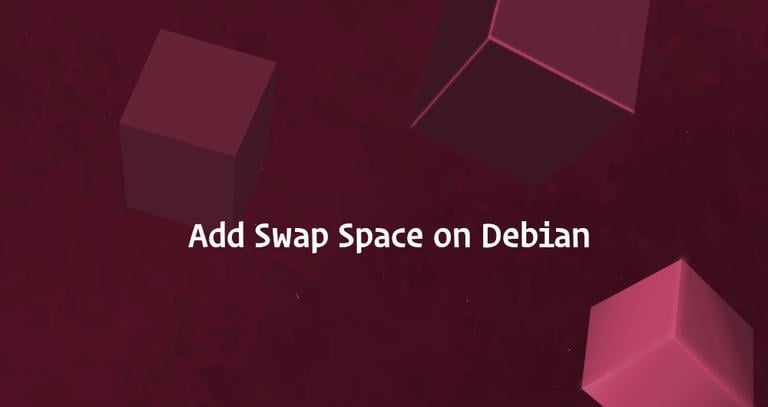How to Add Swap Space on CentOS 7
Updated on
•4 min read

Swap is a space on a disk that is used when the amount of physical RAM memory is full. When a Linux system runs out of RAM, inactive pages are moved from the RAM to the swap space.
Swap space can take the form of either a dedicated swap partition or a swap file. In most cases when running CentOS on a virtual machine a swap partition is not present so the only option is to create a swap file.
This tutorial explains how to add a swap file on CentOS 7 systems.
Before You Begin
Before proceeding with this tutorial, check if your CentOS installation already has swap enabled by typing:
sudo swapon --showIf the output is empty, it means that your system does not have swap space enabled.
Otherwise if you get something like below, you already have swap enabled on your machine.
NAME TYPE SIZE USED PRIO
/dev/dm-1 partition 1.5G 0B -1
Although possible, it is not common to have multiple swap spaces on a single machine.
Creating a Swap File
The user you are logged in as must have sudo privileges
to be able to activate swap. In this guide, we will add 1G of swap, if you want to add more swap, replace 1G with the size of the swap space you need.
Follow the steps below to add swap space on a CentOS 7 system.
First, create a file which will be used as swap space:
sudo fallocate -l 1G /swapfileIf the
fallocateutility is not available on your system or you get an error message sayingfallocate failed: Operation not supported, use the following command to create the swap file:sudo dd if=/dev/zero of=/swapfile bs=1024 count=1048576Ensure that only the root user can read and write the swap file by setting the correct permissions :
sudo chmod 600 /swapfileNext, set up a Linux swap area on the file:
sudo mkswap /swapfileRun the following command to activate the swap:
sudo swapon /swapfileMake the change permanent by opening the
/etc/fstabfile:sudo nano /etc/fstaband pasting the following line:
/etc/fstab/swapfile swap swap defaults 0 0Verify that the swap is active by using either the
swaponor thefreecommand as shown below:sudo swapon --showNAME TYPE SIZE USED PRIO /swapfile file 1024M 507.4M -1sudo free -htotal used free shared buff/cache available Mem: 488M 158M 83M 2.3M 246M 217M Swap: 1.0G 506M 517M
Adjusting the Swappiness Value
Swappiness is a Linux kernel property that defines how often the system will use the swap space. Swappiness can have a value between 0 and 100. A low value will make the kernel to try to avoid swapping whenever possible while a higher value will make the kernel to use the swap space more aggressively.
The default swappiness value on CentOS 7 is 30. You can check the current swappiness value by typing the following command:
cat /proc/sys/vm/swappiness30
While the swappiness value of 30 is OK for desktop and development machines, for production servers you may need to set a lower value.
For example, to set the swappiness value to 10, type:
sudo sysctl vm.swappiness=10To make this parameter persistent across reboots append the following line to the /etc/sysctl.conf file:
vm.swappiness=10
The optimal swappiness value depends on your system workload and how the memory is being used. You should adjust this parameter in small increments to find an optimal value.
Removing a Swap File
To deactivate and remove the swap file, follow these steps:
Start by deactivating the swap space by typing:
sudo swapoff -v /swapfileNext, remove the swap file entry
/swapfile swap swap defaults 0 0from the/etc/fstabfile.Finally, delete the actual swapfile file with
rm:sudo rm /swapfile
Conclusion
You have learned how to create a swap file and activate and configure swap space on your CentOS 7 system.
If you hit a problem or have feedback, leave a comment below.


